Three-fifths of Alabama’s territory is part of the Gulf Coastal Plain, while the northern part is mountainous.
The state serves as a natural habitat for hundreds of native and non-native animal species. Unfortunately, climate change, habitat loss, and urbanization are major threats to some of these animals, which brought them to the scientists’ attention, eventually making them Endangered or Critically Endangered on the IUCN Red List.
As such, we’ll discuss some animals living in Alabama that are on the brink of extinction.
1. Kemp’s Ridley Sea Turtle
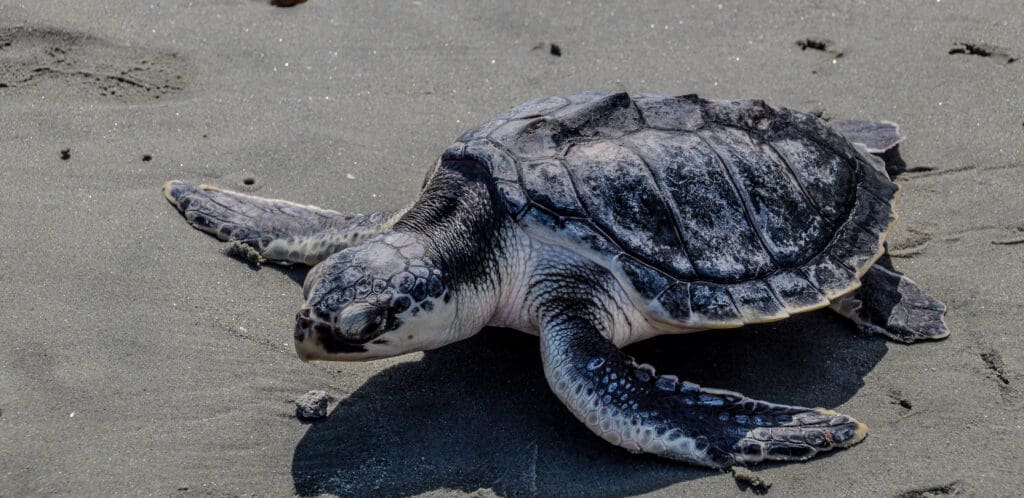
©Prentiss Findlay/Shutterstock.com
These turtles (Lepidochelys kempii) are the world’s rarest sea turtles. Kemp’s ridley sea turtles have a carapace length of 23 – 28 inches and weigh around 79 – 99 pounds. They have flipper-like front limbs and dorsoventrally depressed bodies.
Since the 1980s, these turtlesare under assessment by the IUCN Red List. They were first listed as Endangered at that time. Today, they are Critically Endangered. Their population has a reduction of 80%. Between 1947 and 1985, their population suffered the most significant reduction, averaging 99.4 – 99.6%. Luckily, this was a reversible phenomenon, and the population numbers increased in the 1990s.
Some major threats to Kemp’s ridley sea turtles’ population include fishing, predation, pollution, climate change, illegal harvesting, and oil spills.
2. Alabama Cave Shrimp
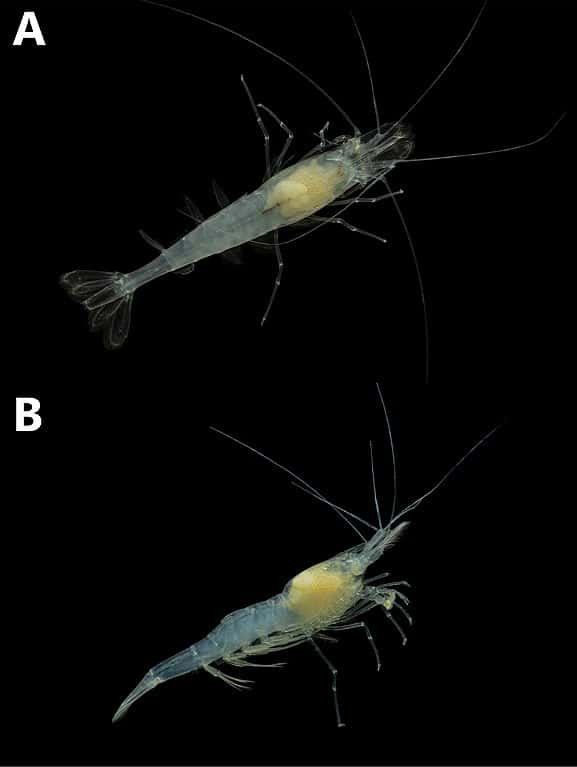
©Niemiller ML, Inebnit T, Hinkle A, Jones BD, Jones M, Lamb J, Mann N, Miller B, Pinkley J, Pitts S, Sapkota KN, Slay ME (2019) Discovery of a new population of the federally endangered Alabama Cave Shrimp, Palaemonias alabamae Smalley, 1961, in northern Alabama. Subterranean Biology 32: 43-59. https://ift.tt/NPdjcqt / CC0 1.0 – License
The Alabama cave shrimp, scientifically called Palaemonias alabamae, lives in Alabama’s caves. More precisely, it lives in the caves found in Madison County, with Shelta Cave being its type locality. Some shrimp are in Bobcat Cave, Muddy Cave, and the extensive Herring-Glover system. Unfortunately, 1973 is the last time we see the shrimp inhabiting the Shelta.
This species is Endangered. Primarily because of groundwater extraction and chemical contamination of water. In Shelta Cave, Alabama cave shrimps are disappearing because the water face contamination primarily by cadmium. In the Herring-Glover system, large chicken farms cause manure discharge, thus affecting the Alabama cave shrimp population.
3. Red Hills Salamander

©United States Geographical Survey / public domain – License
This terrestrial salamander, scientifically called Phaeognathus hubrichti, measures around 10 inches and has a gray to brownish body and short limbs. It is in Alabama and is the state’s official amphibian. It inhabits a small portion between the Red Hills region and the state’s southern part, primarily in the Tallahatta and Hatchetigbee geological formations. The Red Hills salamander lives in burrows.
The Red Hills salamander is currently listed as Endangered. Its population is constantly decreasing. Timber harvesting has severely impacted their habitat and life cycles. Other threats include a limited capability of dispersal and a low reproductive rate. In the future, they may face threat by certain diseases, such as the salamander chytrid fungus.
Luckily, the Nature Conservancy acquired a piece of land that would serve as a natural habitat for this species. However, the state of Alabama took it over for recreational use.
4. Scalloped Hammerhead

©Ian Scott/Shutterstock.com
You’ve probably heard about the famous hammerhead sharks. Well, the scalloped hammerhead is a Critically Endangered hammerhead shark species. People also call it kinky-headed, southern hammerhead, or bronze. These sharks live in temperate and tropical coastal waters at depths of up to 1,600 feet.
In the United States, the scalloped hammerhead is in the waters belonging to coastal states like Alabama, North Carolina, and Florida. Thanks to management, its population is getting better in the Northwest Atlantic and the Gulf of Mexico.
People catch this shark for its meat and fins. Moreover, many sharks die in vessel collisions.
5. Princess Elimia
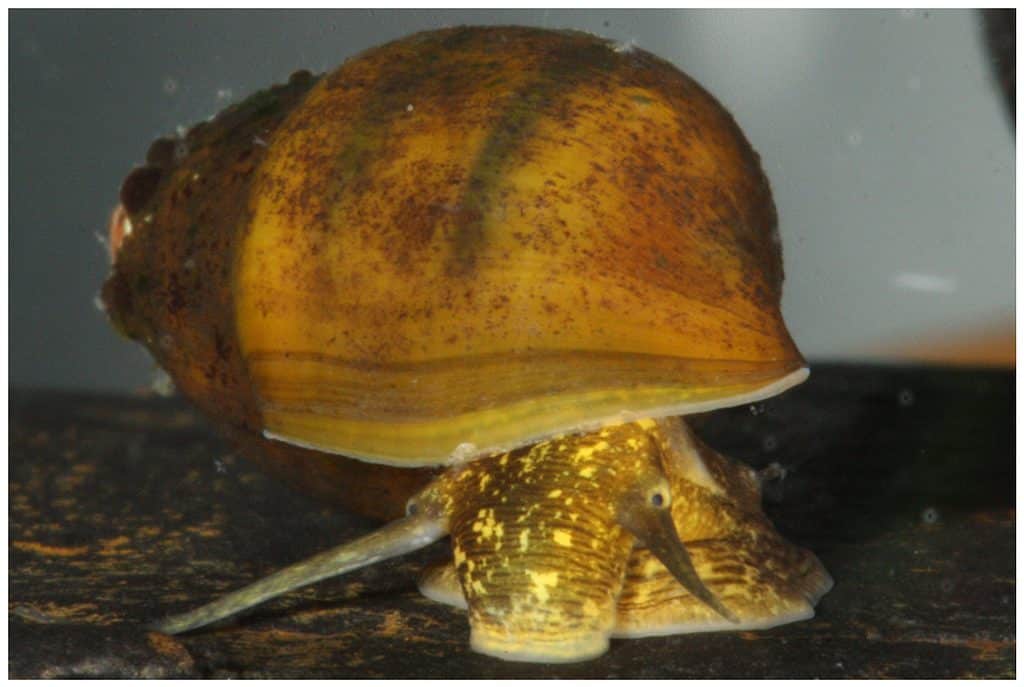
©1,992 × 1,339 pixels, file size: 3.59 MB, MIME type: image/png – License
The princess elimia, or Elimia bellacrenata, is a mollusk in the Srobeoconcha taxonomic clade. This mollusk is only in Alabama. It is historically in the springs and creeks found in Bibb, Shelby, and Tuscaloosa Counties, as well as in the Cahaba River drainage’s tributary streams and brooks. Today, however, they inhabit a single location. They are listed as Critically Endangered.
The water quality is a major threat to their population. The population is down by 50% over the last years and continues to decline as the water faces constant pollution.
6. Eastern Small-Footed Bat

©Paul Moosman / CC BY-SA 4.0, via Wikimedia Commons – License
Myotis leibii are part of the Vespertilionidae family of microbats. They are 2.5 – 3.7 inches long and have a wingspan of 8.2 – 9.8 inches. They have very small hind feet and distinctive dark facial masks thanks to their black ears and muzzles.
The species is listed as Endangered. Its population is constantly decreasing. Scientists consider that the eastern small-footed bat population registered a reduction of around 70% compared to historical numbers. The main cause and threat is the impact of the white-nose syndrome. Which is a disease from the Pseudogymnoascus destructans fungus affecting the ears, muzzles, and wings of bats.
Besides this, these bats suffer habitat loss, especially from the collapse of mine ceilings and cave commercialization for tourism.
Eastern small-footed bats currently inhabit Canada and the United States. In Alabama, they’re primarily in the northern region, where they prefer forest and rocky areas, caves, and other subterranean ecosystems.
7. Recovery Pearly Mussel

©1,800 × 1,202 pixels, file size: 288 KB, MIME type: image/jpeg – License
The recovery pearly mussel or winged spike (Elliptio nigella). It’s a freshwater mussel endemic to the United States. The conservation status of this species has “fluctuated” over the years.
Between 1986 and 1990, the species was Extinct. In 1994, however, it was ”indeterminate,” and then “Critically Endangered” in 1996, and “Extinct” again in 2000.
Recovery pearly mussels are currently Critically Endangered again. Scientists believe they may live in the Flint River, Georgia, but they aren’t sure whether the mussels are still in Alabama and Florida. However, until further confirmation, we can assume and hope that Alabama is still home to recovery pearly mussels.
8. Keel-Necked Firefly
The keel-necked firefly is part of the Lampyridae family of beetles. It is currently in New Jersey, Delaware, Florida, and Alabama, where it lives in brackish tidal marshes and low-lying wet pastures.
The species is Endangered. There are only 18 extant occurrences of note, with at least three occurrences in Florida and Alabama.
Keel-necked fireflies’ primary threat is habitat loss, the spread of invasive plants, artificial night lights, and sea level rise. For example, the destruction of Florida’s salt marsh habitats by unsustainable coastal development, while rising sea levels may wipe out the firefly’s habitat. A common invasive plant that can cause a keel-necked firefly population drop is Phragmites australis, also called the common reed.
9. Rusty Patched Bumble Bee
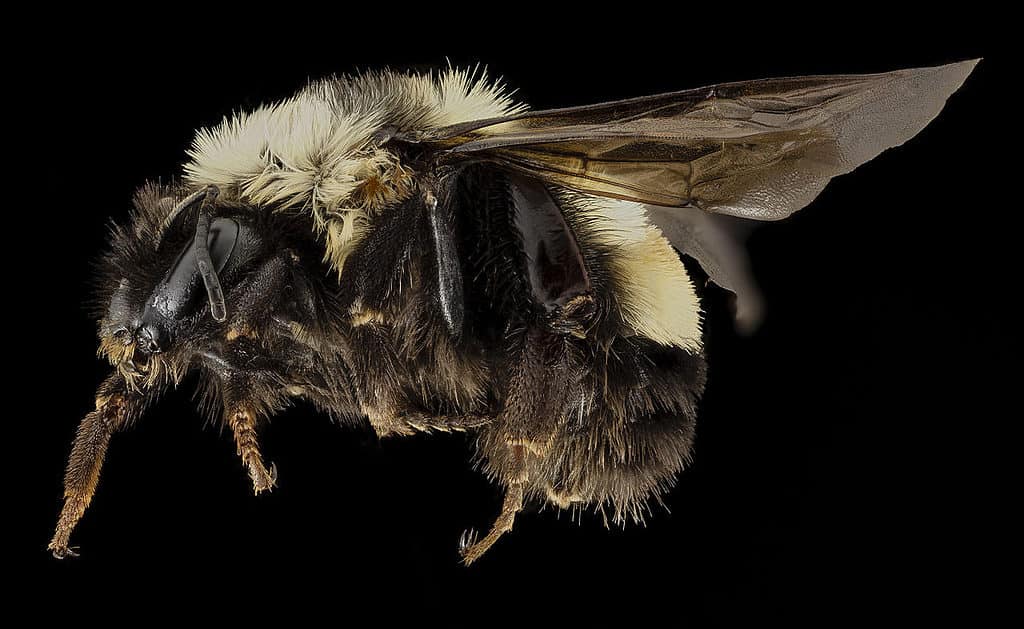
©USGS Bee Inventory and Monitoring Lab from Beltsville, Maryland, USA / public domain – License
Bombus affinis are endemic to North America, where they live in various habitats with a temperate climate. Their size varies between queens, workers, and males. The appearance also differs – while queens and workers have black hair on their heads, males have several white hairs.
Rusty patched bumble bees are Critically Endangered. While they were historically abundant throughout the United States and Canada, today, their current range compared to their historic range stands at around 54.68%. Few individuals left in the east. Their presence is uncertain in many U.S. states.
This significant drop is a consequence of pesticide use, habitat loss, fragmentation caused by development and agriculture, pathogen spillover from other species, and climate change.
10. Whitespotted Eagle Ray
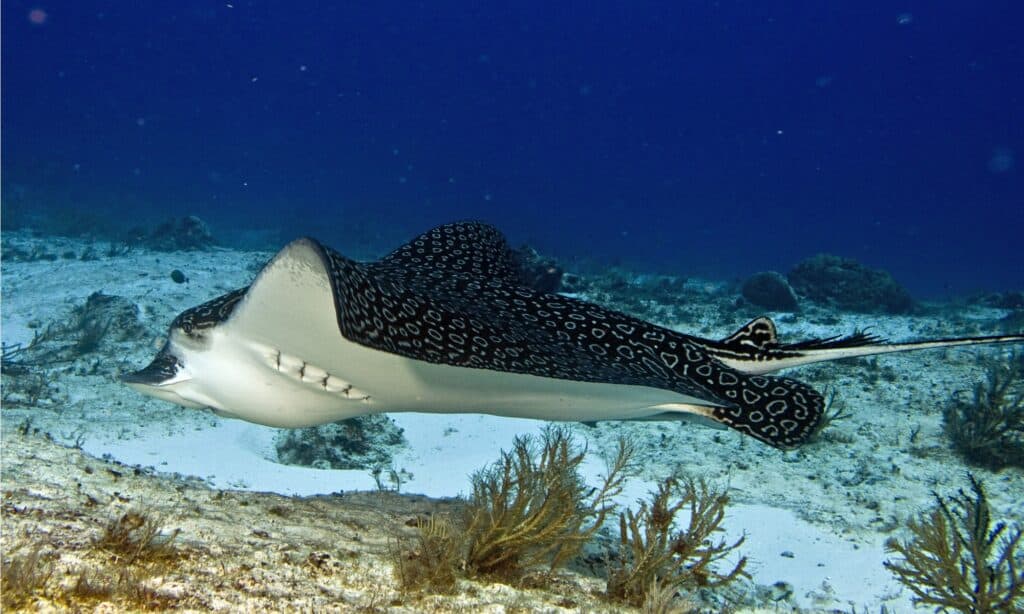
©iStock.com/eaglerayjoel
The white-spotted eagle ray, Aetobatus narinari, is a cartilaginous fish. It has a flat disk-shaped body, a long tail, and five small gills on its underside. Its most distinctive feature is the dark dorsal surface with white rings and spots. The fish inhabits tropical regions of the Atlantic, Indian, and Pacific Oceans, although nowadays, it is more often in the Atlantic.
The species is Endangered. A population reduction of 50 – 79% over the past 30 years. The main threat to the white-spotted eagle ray population is fishing pressure.
Up Next:
The post 10 Amazing Animals That Are Endangered and Living in Alabama appeared first on AZ Animals.
from Animal News, Facts, Rankings, and More! - AZ Animals https://ift.tt/JnSsCUz